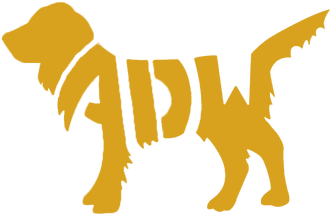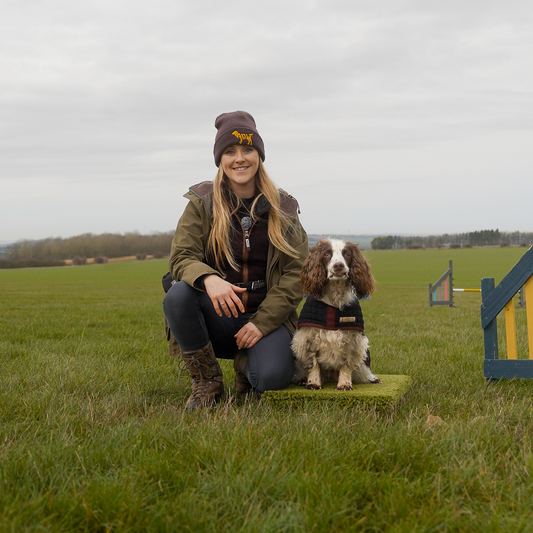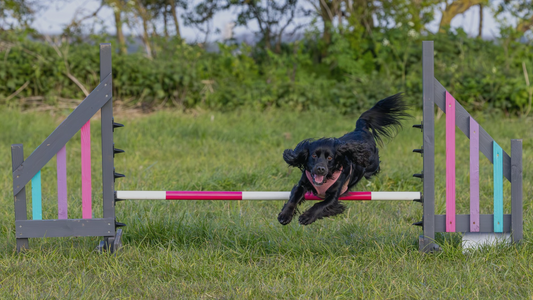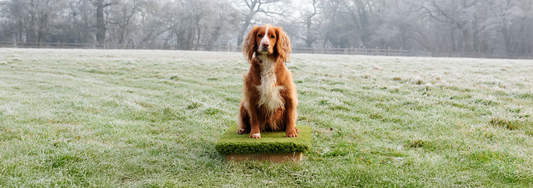Dog Agility in Cambridge: Turning, Handling, and Training Tips
Welcome! Whether you’re new to dog agility or building on the basics, this guide will break down the foundational skills to help your dog confidently navigate turns and follow your cues from a distance. Each session is designed to set you and your dog up for success with fun, achievable steps to build confidence and skills in agility.
Navigating Turns
Why Teach Turning Skills?
In agility courses, obstacles are spaced between 5 to 10 meters apart, so it’s key to help your dog learn to handle turns and follow your cues from a distance.
As your dog gains experience, they’ll need to know how to move left or right on cue, even when you’re at a distance.
Starting with simple, foundational exercises and gradually adding distance will help your dog navigate a course smoothly—especially if they’re quick on their feet!
Curved Tunnel
In the first week, we introduced your dog to straight tunnels, allowing them to see right through to the other side. This week, we’ll add some turns to the tunnel, encouraging your dog to run through on command even when they can’t see the exit. This is a great way to build confidence and trust in their response to the tunnel cue.
We conclude by bringing the skills together as a group by running a short sequence.
Doggy dictionary:
We will be adding/developing the following cues in this sessions exercises:
- Left: A loose left turn after an obstacle.
- Right: A loose right turn after an obstacle.
- In: Come closer to the handler.
- Out: Move farther away from the handler.
- Tunnel: Enter the tunnel and run through, regardless of angle.
Week 2 Training Exercises
A detailed breakdown for those who want one. (Homework at the end)
In this session, we’ll work with basic setups to help your dog get used to following directions from the centre of a small circular course.
Fan Work Exercise
Fan work is where four jumps are arranged in a circle. The handler stands in the centre and with the arm closest to the dog out and guide the dog around the fan.This exercise teaches your dog an understanding of following an outstretched arm and prepares them for larger agility courses where distance handling is important.
You can see Yogi learning the foundations of ‘fan work’ in the short clip below 👇

Building Up the Distance with the 3-Ds
According to Kennel Club Agility Rules, course obstacles are 5-10 meters apart, which means that fan work can eventually become a larger circle as you add distance. To help your dog succeed, we’ll use the "3-Ds" of dog training:
- Distance: Start with jumps arranged in a small circle without poles, gradually increasing the size.
- Duration: As your dog becomes comfortable with the jumps, hold their attention for longer stretches.
- Distraction: Finally, add poles to make the jumps more challenging and rewarding.
With these steps, your dog learns to stay focused and follow directions, even with increased distance and complexity.
How to practice dog agility at home:
You can practice these agility exercises right at home! Even without jumps or agility equipment, you can build a DIY fan setup using any four objects that form a circle—like chairs, cones, or posts. Follow this four-step approach to practice left and right turns at home:
- Lure: Guide your dog around the “jumps” using a treat or toy.
- Fade the Lure: Gradually reduce treat guidance as they start to understand the movement.
- Add a Cue: Begin using verbal cues like “left” or “right.”
- Increase Distance: Slowly add distance as your dog gains confidence
Fan Work GOAL to achieve:
Practice fan work until your dog will circle left an right around 4 objects spaced more than 5 metres apart.
You can think of it like teaching your dog to navigate a circle remotely like a satellite, with you in the middle.
TIP: If using stick in the ground poles, angle them inward to encourage your dog to go around the outside. This setup naturally discourages cutting through the circle, keeping them on the intended path.
4-stage process outlined in the picture below:
Lure. Fade lure. Add cue (“left or right”). Add distance (Up to 5m+)

Bonus Handling Skill: Training "In" and "Out"
If you’ve mastered the fan work exercise, with your dog successfully circling four objects spaced more than five meters apart, you’re ready to layer in the “in” and “out” commands referenced in the Doggy Dictionary. This exercise helps build essential agility skills by teaching your dog when to move closer (in) or stay farther away (out) from you by following your body language and verbal cues.
Use the same setup as your fan work exercise.
-
Starting Position: Begin in the center of the circle, with your dog at your side. This is different from previous exercises where they stayed outside the circle.
-
Say “out” and with a bowling action (leading with your left arm and leg if the dog is on your left) guide your dog towards the post in front of you. Now, with your arm outstretched begin circling clockwise. When you turn right, your dog should turn right, reinforcing the learning from the fan drill to follow your arm direction.
-
Mix Up Your Pattern: As you circle, choose different posts each time to cue “in.” This avoids predictability and keeps your dog engaged by making them follow your cues rather than guessing.
-
Putting It All Together: With your dog on your left, you’ll move clockwise. As you approach a pre-determined post, drop your arm and say “in” (or add their name first if they need extra focus). Once your dog responds, reward them, reset back to the middle, and repeat.
Using “in” and “out” in this way prepares your dog for agility courses with more advanced setups. In a serpentine pattern (often called an "S" or “snake line”), your dog may need to weave through a sequence, like jumps 3, 4, and 5 in the course image below. Imagine the cues: as they exit the tunnel, you’d say “in” to bring them closer and over jump 3, “out” to guide them over jump 4, then another “in” for the next turn. This sequence becomes “tunnel, in, out, in”—all guided by your cues!
Like the content we put out and want to stay updated and in the know?

Join our subscribers to gain short weekly emails (under 1-minute reads) plus the opportunity to reach out & get professional advice on your own training challenges. Read answers to members' FAQs, receive training & equipment news offers and tips directly to your inbox.
Click here to join our subscribers
About the author: Hi 👋 I’m Emma, accredited as a professional dog trainer by the Institute of Modern Dog Trainers (IMDT). I help owners of energetic dogs achieve the dog-owning life they envisioned by providing robust obedience & agility training for dogs across my two venues in Balsham and Barton, near Cambridge.
Disclaimer: The content of this article does not include personalised advice and is for information purposes only. If you need individual advice or other enquiries please click here to get in contact or if you're not local to Anglian Dog Works, you can find a trainer in your area by going to the IMDT website: https://www.imdt.uk.com/find-a-qualified-imdt-trainer







